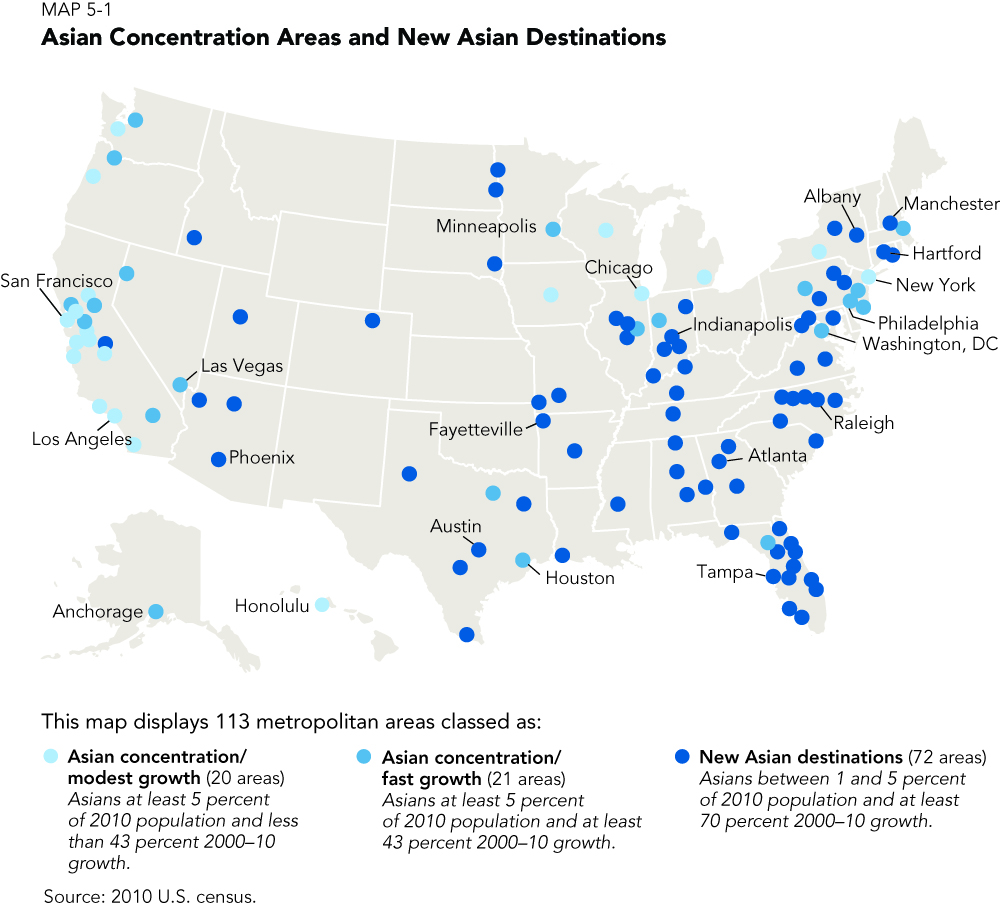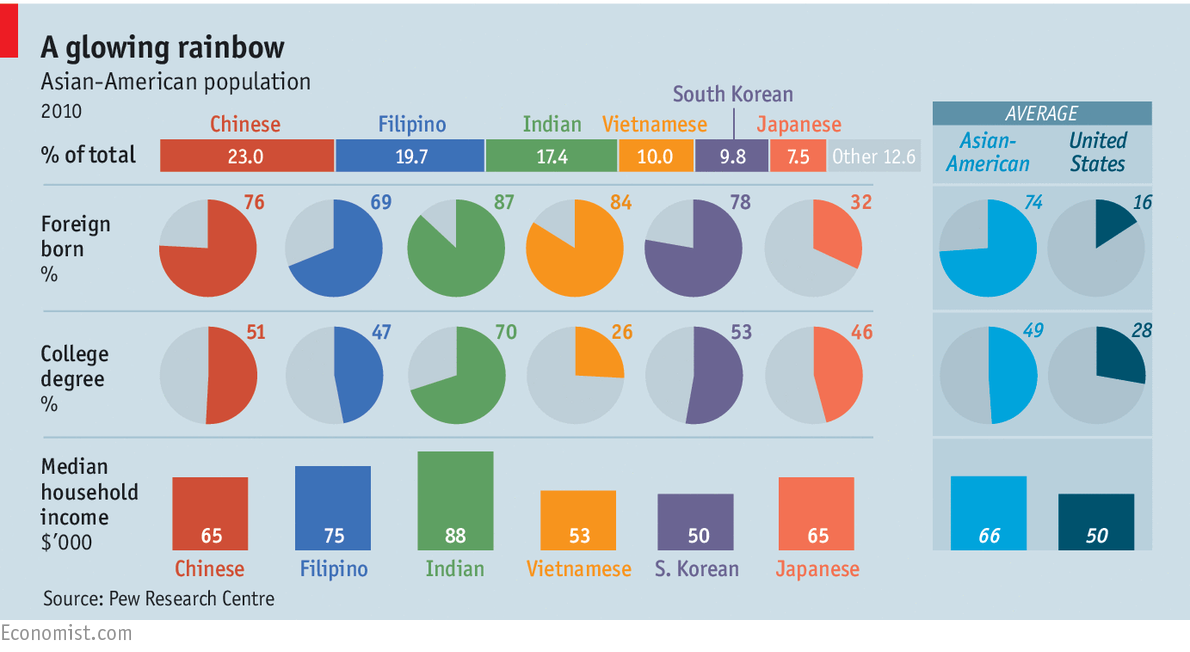 The reading “Unsettled Visions” by Professor Margo Machida opened my eyes to issues of immigration and the process of identity formation in a new country. Machida gives us a detailed description of how Asian American art has long been used as a way to invoke cultural similarities among Asian Americans and create a social presence in the Western World. Asian artists, therefore, are constantly looking for sources of identity, such as collective memories, cultural ideologies and shared life experiences, in order to build an Asian American identity. As a result, visual images and symbols used in works of art emerge as points of connection among Asians, Americans and other ethnic groups who aim to find this connection as well. However, because of globalization and the highly diverse environment of the United States, this process of creating an identity may come with highly controversial issues regarding race and equality. For example, as Machida mentions, in the 60s and 70s during the Civil Rights Movement art and other forms of expression became a source of ethnic and cultural awareness as opposed to creating an Asian American identity in the US. During these years, many Asian American artists started to use their art to express ethnic pride and third world solidarity. Although this aspect of Asian American art later became a source of criticism in the contemporary artistic discourse, it shed light on similarities between Asians and other minority groups facing similar issues in the US. This contributed to many scholars, including Machida, focusing their attention on the study of specific ethnic groups in order to have a better understanding of predominant social issues such as race, discrimination and economic exploitation in the US.
The reading “Unsettled Visions” by Professor Margo Machida opened my eyes to issues of immigration and the process of identity formation in a new country. Machida gives us a detailed description of how Asian American art has long been used as a way to invoke cultural similarities among Asian Americans and create a social presence in the Western World. Asian artists, therefore, are constantly looking for sources of identity, such as collective memories, cultural ideologies and shared life experiences, in order to build an Asian American identity. As a result, visual images and symbols used in works of art emerge as points of connection among Asians, Americans and other ethnic groups who aim to find this connection as well. However, because of globalization and the highly diverse environment of the United States, this process of creating an identity may come with highly controversial issues regarding race and equality. For example, as Machida mentions, in the 60s and 70s during the Civil Rights Movement art and other forms of expression became a source of ethnic and cultural awareness as opposed to creating an Asian American identity in the US. During these years, many Asian American artists started to use their art to express ethnic pride and third world solidarity. Although this aspect of Asian American art later became a source of criticism in the contemporary artistic discourse, it shed light on similarities between Asians and other minority groups facing similar issues in the US. This contributed to many scholars, including Machida, focusing their attention on the study of specific ethnic groups in order to have a better understanding of predominant social issues such as race, discrimination and economic exploitation in the US.
Although Machida aims to explore the realm of Asian American Contemporary art, this reading helped me to understand the value of a multidisciplinary approach when studying issues of identity formation and diaspora. American artists from different backgrounds, for instance, are especially interesting because they bring different perspectives to their work which might include not only personal experiences as non-American descendents, but also collective social memories shared from their ancestors such as history of oppression and struggle to adapt to the dominant culture. As Machida shows in the first chapter, the attempt to build a concept of Asian American culture might be challenging because it can be considered only one more way to add to the discourse of race. For this reason, in the 1990s, many Asian American artists became reluctant to present their work under an ethnic category. The concept of Asian American Art is dynamic and has been shifting according to different historical contexts (such as Word War II, Korean War and Vietnam War). In the US, Asian American Art has been helpful in introducing different perspectives and formulations of the concept of Asian identity in cultural discourses. As we have seen in previous readings, the myth of continents as well as geopolitical boundaries, derive from an Eurocentric point of view, and it can be extremely misleading. For example, as Machida reminded us, for many years Americans thought of Asians as people who came from the southeast Asia and Philippines. But, with the ever growing Asian diversity in the US and the creation of academic disciplines such as Asian American Studies, this socially constructed concept of “Asia” has been changing domestically as well as internationally. As Machida proves to us with several examples, influential artists have been key to this process of, as she names, “denationalization,” in which Asian Americans become simply elements of Asian origin rather than any stereotypical concept of Asian identity.
After reading Machida, I got inspired to learn more about how the Asian diaspora developed in Brazil. In the last reading, Fresser gave us a broader understanding of how immigration changed Brazil’s destiny in the post-colonial period and continues to change today. Having Fresser in mind combined with Machida’s insights about Asian American identity formation in the US will change how I will lead my research about the Japanese-Brazilian artist Tomie Ohtake. Immigrating to Brazil during the WWII, Ohtake might have an interesting story about Japanese diaspora embedded in her art. Also, her sculptures today have become fixtures of the cityscape in Sao Paulo and other Brazilian cities highlighting the Japanese presence in Brazil. I am curious to learn more about what influenced Ohtake’s work and its impact on the Asian Art in Brazil and also globally. As Machida showed us in her book, I believe there is a lot to learn from immigrant artists that will contribute to a broader understanding of history and social formation around the world.
